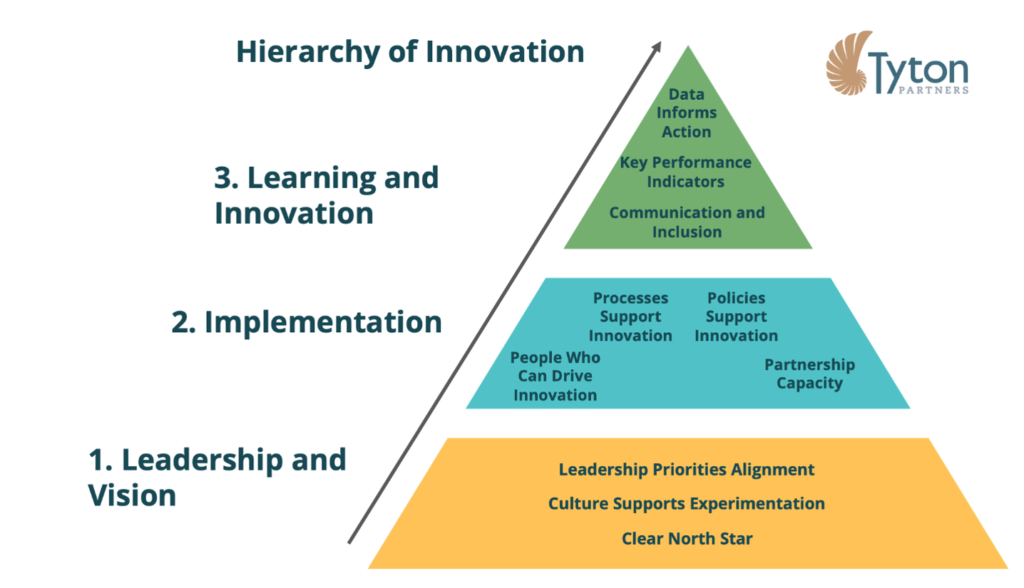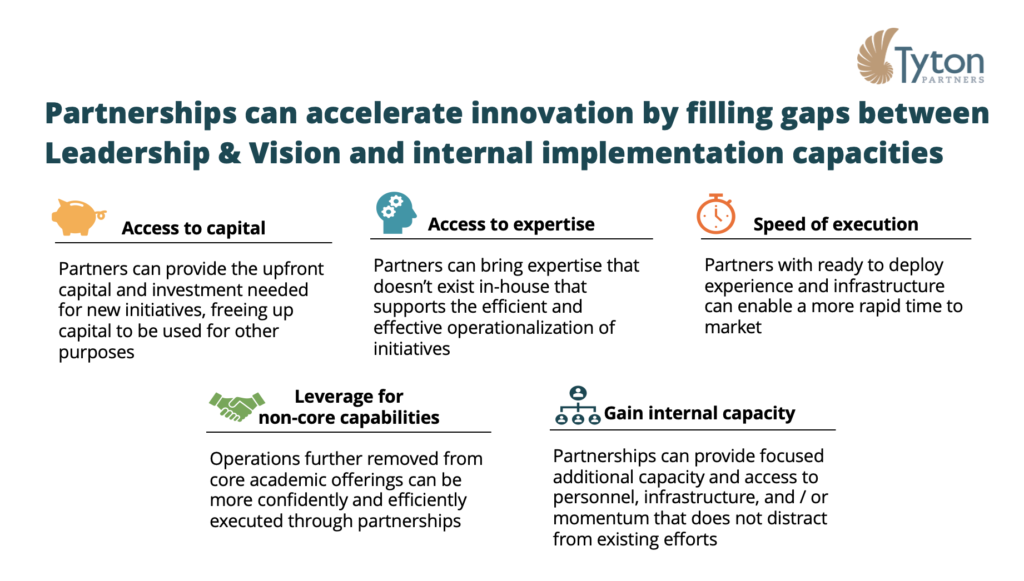Catalytic Capital: From Recognition to Action in Education-to-Workforce Investing
July 8, 2025 BlogThe education-to-workforce pipeline is under pressure – and changing fast. The World Economic Forum notes that employers around…
We work with institutions and organizations that are constantly innovating in service of building experiences, products, and services that can benefit students. There is urgency for institutions to adopt approaches that drive innovation in order to deliver on the promise of socioeconomic mobility and close persistent student success and outcomes gaps that exist based on race and income. In this environment, new tools, business models, and ways of meeting students where they are needed. Creating capacity in organizations to build creativity, ongoing learning, and innovation around student success and outcomes is critically important and, to do it at-scale, approaches to innovation must be centered and approached in a structured fashion.
Recently, we looked at what we’ve collectively learned about those organizations who effectively build innovation into their organization in ways that drive measurable and sustained growth and improve student outcomes. There are three core capacities – leadership and vision, implementation, and learning – that the most effectively innovating organizations create and nurture to drive outsized outcomes and a focus on student success. Here is what we are learning about what works to scale and sustain innovation and how you can apply it to your organization.


Reach out if you’d like to learn more about how we help institutions build out structures and approaches to bolster innovation in student success and at your institution.